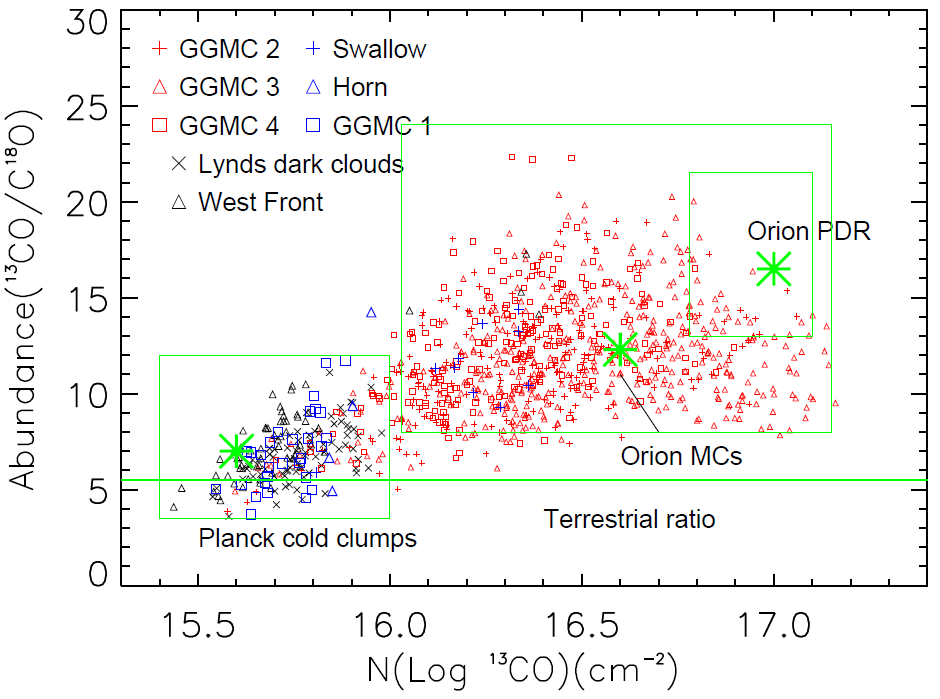The chemical abundance of molecules is the basic chemical property of molecular clouds, which is of great significance for studying the interstellar medium and the formation and evolution of molecular clouds.A team of scientists fromthe Milky Way Imaging Scroll Painting (MWISP) project, who present analyses of the 13CO abundanceX(13CO) and the abundance ratio X(13CO)/X(C18O) of molecular clouds by collecting 12CO, 13CO, and C18O (1–0) transitions toward the Galactic anti-centerin the ranges 186.25°< L<195.25°, -3.75°<B<2.75°. The authors find that these clouds in the regioncan be divided into two types according to X(13CO)/X(C18O).The type I cloudshave lowerX(13CO)/X(C18O)and lower column density with relatively lower temperature, but type II cloudshave a higher abundance ratio X(13CO)/X(C18O)and higher column density with relatively higher temperature. They discussed in detail the effects of photo dissociation on the chemical abundance of molecular clouds. By comparing thesamples with other clouds, the team find that type I clouds are probably at an earlier evolutionary stage than type II clouds.  By with WANG Chen Fig. N(13CO) vs. X(13CO)/X(C18O) measured in all clouds. Different symbols represent different clouds. The green line indicates the terrestrial ratio X(13CO)/X(C18O)= 5.5 (Wilson & Matteucci 1992). The green star symbols and rectangles indicate the mean X(13CO)/X(C18O) value and the main distribution area in Planck cold clumps (Wu et al. 2012), Orion MCs, and Orion photon-dominated regions (Shimajiri et al. 2014). The paper was published in the Astrophysical Journal Supplement Series (2019, ApJS, 243, 25). Detailed information of the paper can be found at https://iopscience.iop.org/article/10.3847/1538-4365/ab2d2e |
